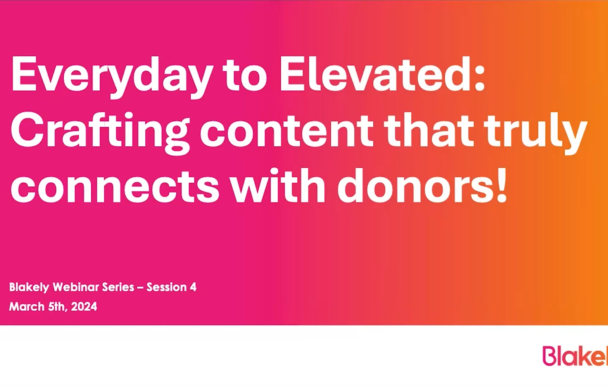Some Food For Thought: Tips For Foodbank Fundraisers
I’ve been working with food banks for years and have identified that there are some really unique components when it comes to fundraising. Here are some insights I’ve gleaned over the years that you might find helpful:
The case for support is clear, and the ask is tangible
People are motivated to give to food banks because they see the impact of their gift right in their own communities. Some have used services themselves or have loved ones who have had to turn to the food bank for help. Many food banks use the analogy that “every day can be an emergency”, meaning it might only take that one event in your life that will mean you will need an extra helping hand to ensure you and your family have food on the table.
Having a food bank to turn to in hard times can mean the difference between not having to decide on buying groceries or paying rent, and this is why it’s such a clear case for supporters.
TAKEAWAY TIP: Having a clear case for support is essential, but different audiences may be motivated by different things. Try testing! It’s a great way to see what resonates with different donors. You may be surprised by what delivers the strongest results!
Donors Want To Meet the Needs of People in the Community
Food banks provide an opportunity for donors to support local, so it is important to show local impact in fundraising materials. However, we’ve seen through our research that many donors are equally motivated to support nationally, while also supporting on a local level. When possible, national, regional, and local collaboration of resources enables local food banks to provide more food, and specifically, fresh food, to Canadians in need and meet the donors’ desire for both local and national impact and resourcing. The focus is on the right support for people when they need it and sometimes this takes collaboration and creativity.
TAKEAWAY TIP: Look for ways to express your impact on people, partners, and the community. Donors are motivated by efficiency, choice, and delivering on the real needs of families and individuals. Sometimes partnering with larger or smaller organizations enables you both to do more with less.
Small but mighty – the advantage of smaller teams
Throughout the years, I’ve worked with many small, local food banks with a small fundraising team. One of the ways a small team can increase their reach is by focusing on integrated fundraising and taking advantage of all channels including mail, digital media, email, and, in some cases, newspaper inserts and community events all of which help to reach the largest number of potential donors. But timing is critical. It’s important to also time all tactics with any organic activity planned by the local food bank, such as city-wide food drives, TV/radio-thons, and any increased media coverage that will support the fundraising campaign so that everything is working together to create both awareness and support.
TAKEAWAY TIP: If you are on a small team, it can seem overwhelming trying to plan a fundraising campaign that has several tactics that run over an extended period of time. Chart out the full campaign with all the tactics and phases – you will be amazed how this can bring it all together and simplify the approach. And remember – you have the advantage of really knowing your donors and community – use it to your advantage in your planning!
The COVID Impact – Now What?
While some charities were negatively impacted by COVID-19, food banks saw significant growth in 2020 and 2021. Many Canadians who may have never done so before, realized how important it was to support their neighbours through food banks.
A lot of this growth was seen in digital fundraising because we pivoted quickly to launch digital campaigns, including media and email. These tactics didn’t work alone, however – they were followed by mail campaigns that helped to lift response and give donors options to respond through their preferred channel. Moving forward, this means we are testing various touchpoints across channels to help determine what moves a donor to give, and what timing works. It is vital that donors who supported food banks for the first time are taken through a journey that explains why the need continues despite the feeling that the pandemic might be coming to an end. Keeping donors is a key strategy to sustained growth and how we treat these people now will determine what they do in the future.
TAKEAWAY TIP: If you are in an organization that experienced massive growth over the last year and are currently feeling overwhelmed and not sure what to do with all those new donors, my colleague Rachel has written a blog about onboarding that you may find helpful!









